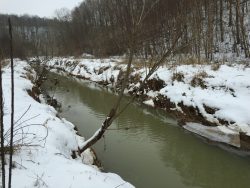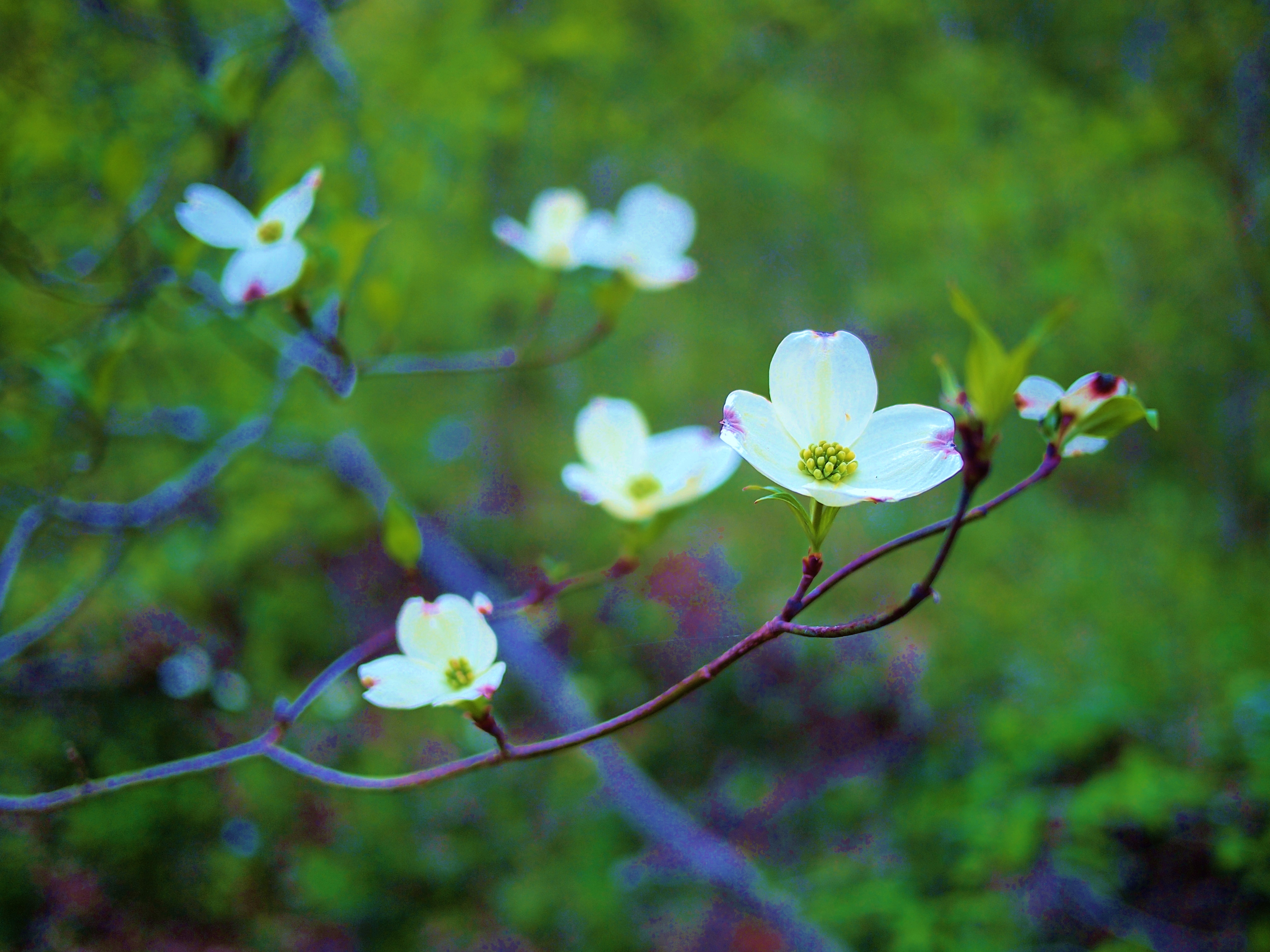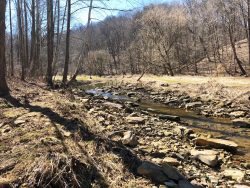
Representative before construction view of channelized Buckeye Creek with very little habitat and poor floodplain connection.
EnviroScience, Inc. and RiverReach Construction led a diverse and highly qualified team in the restoration of over 7,215 LF of stream and over 60 acres of riparian, wetland, and forested floodplain for the Ohio Valley Conservation Coalition (OVCC). The project comprised four separate sites on property owned by OVCC in Jackson County, Ohio; however, the focus of the project was on Buckeye Creek, which has a watershed of over 12,000 acres and also contains Hammertown Lake, the City of Jackson’s primary drinking water source. Buckeye Creek merges with Salt Lick Creek just west of the City of Jackson. Periodically, during large rain events, the City of Jackson floods largely as a result of Buckeye and Salt Lick Creeks. Over the years many sections of these streams have been straightened, ditched and dredged so that their floodplain access has become limited, thereby increasing the rate and volume of water reaching the City of Jackson during a storm. Lateral migration of the unstable, ditched stream channels has resulted in areas of severe erosion and downstream sediment deposits and debris jams requiring removal.
EnviroScience undertook a project on one section of Buckeye Creek that could serve as a model for other stream and floodplain restoration efforts throughout the area that would help to reduce flooding danger to the City of Jackson, while also vastly improving water quality and aquatic habitat for fish. The restoration approach centered upon reversing historical impacts to Buckeye Creek within the project area. Those historical impacts included ditching, dredging, floodplain disconnection, dam construction, in-stream cattle grazing, and invasive plant species colonization. The project objectives included reconnecting Buckeye Creek to the existing floodplain using a raise-grade approach, improving stream sinuosity, the addition of numerous riffle/pool sequences to raise grade and improve stream morphology and habitat, and extensive riparian wetland improvement and expansion.
Emphasis was placed on stream channel depth and flow variability to help minimize energy and erosion, while greatly restoring aquatic habitat suitable for ecological improvement. Over-deep pools with woody habitat were incorporated to increase fish habitat. Where suitable, the existing stream pattern was utilized in order to stretch the available funding. And, to assist with downstream flooding issues, emphasis was also placed on maximizing floodplain and riparian wetland usage so as to slow, retain and filter storm water. EnviroScience worked and communicated closely with OVCC throughout the project, tailoring the restoration work to their goals and paying precise attention to the type and location of such things as the floodplain and wetland plantings.
“I am amazed at the level of detail that went into this project,” said Joel Wood, OVCC’s Chairman. “Every single pool, every single riffle, every piece of woody habitat placed into the stream or floodplain was meticulously and individually designed and built. There was no “one-size-fits-all-approach” to any aspect of this project. I couldn’t be happier with the result.”
Most material used in the project was either harvested on site or it was sourced locally to maximize budget and authenticity and to reduce transportation needs. The EnviroScience and RiverReach team utilized local contractors, such as Warrior Excavating, Williams Forestry & Associates, and Appalachian Professional Associates, for various roles whenever possible in order to benefit the local economy. The project team took great care to focus on the ecological uplift derived from the project, but also to maximize the social, economic and future recreational benefits to the community from the project.
Read more about our restoration services here.



